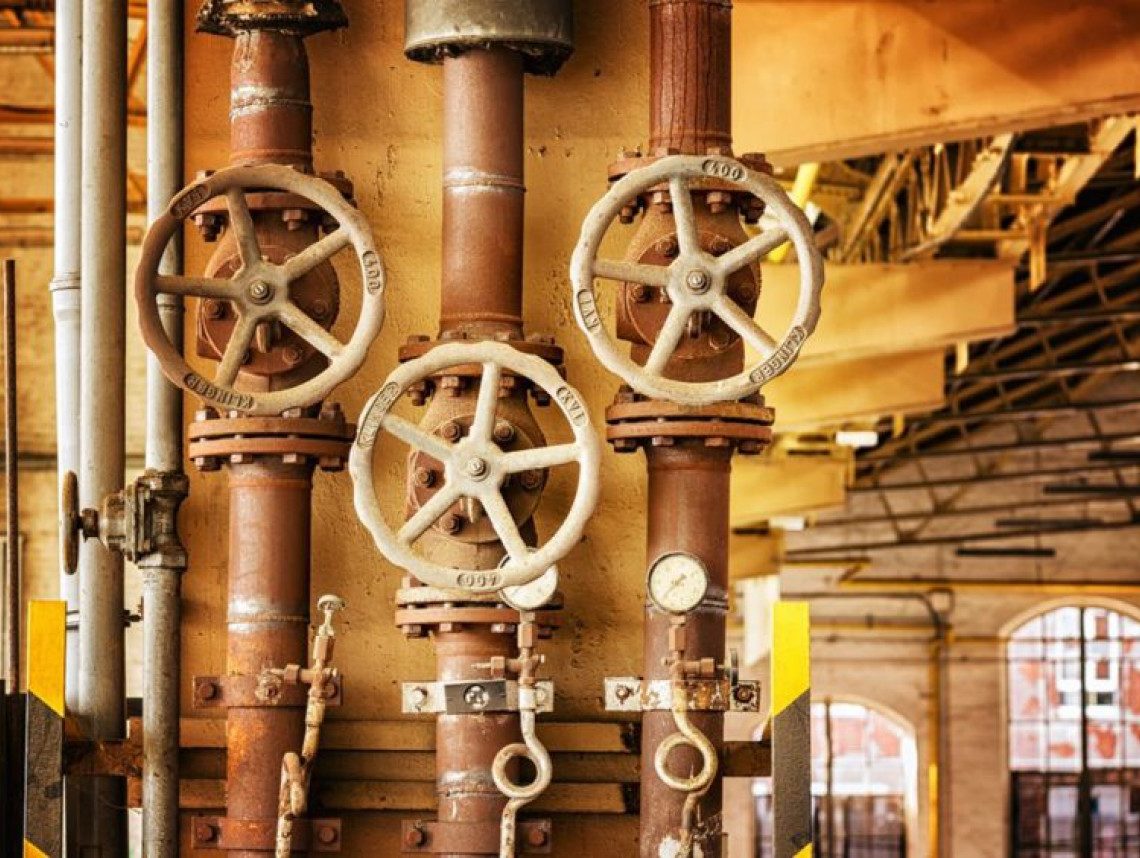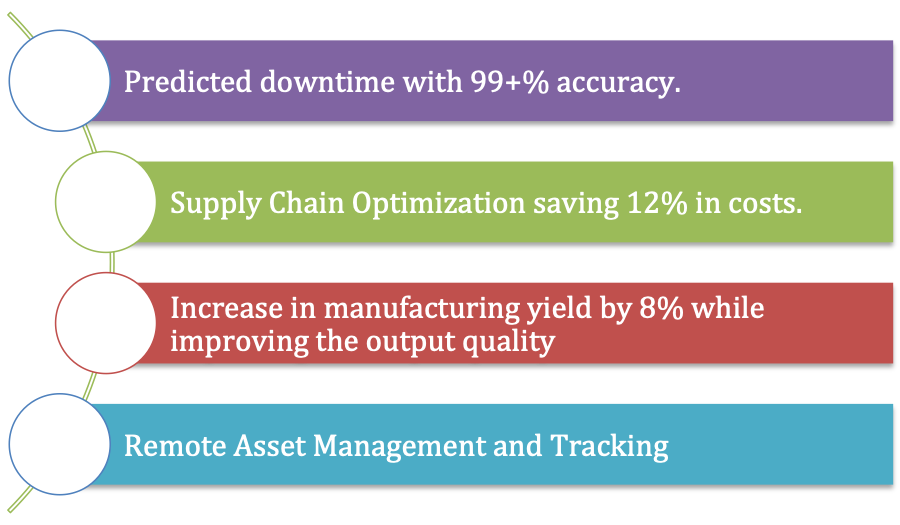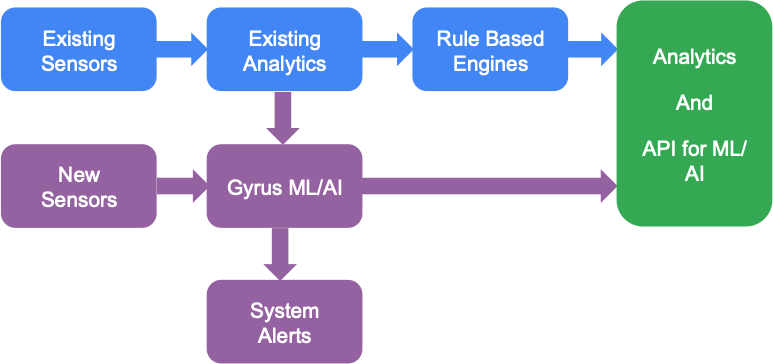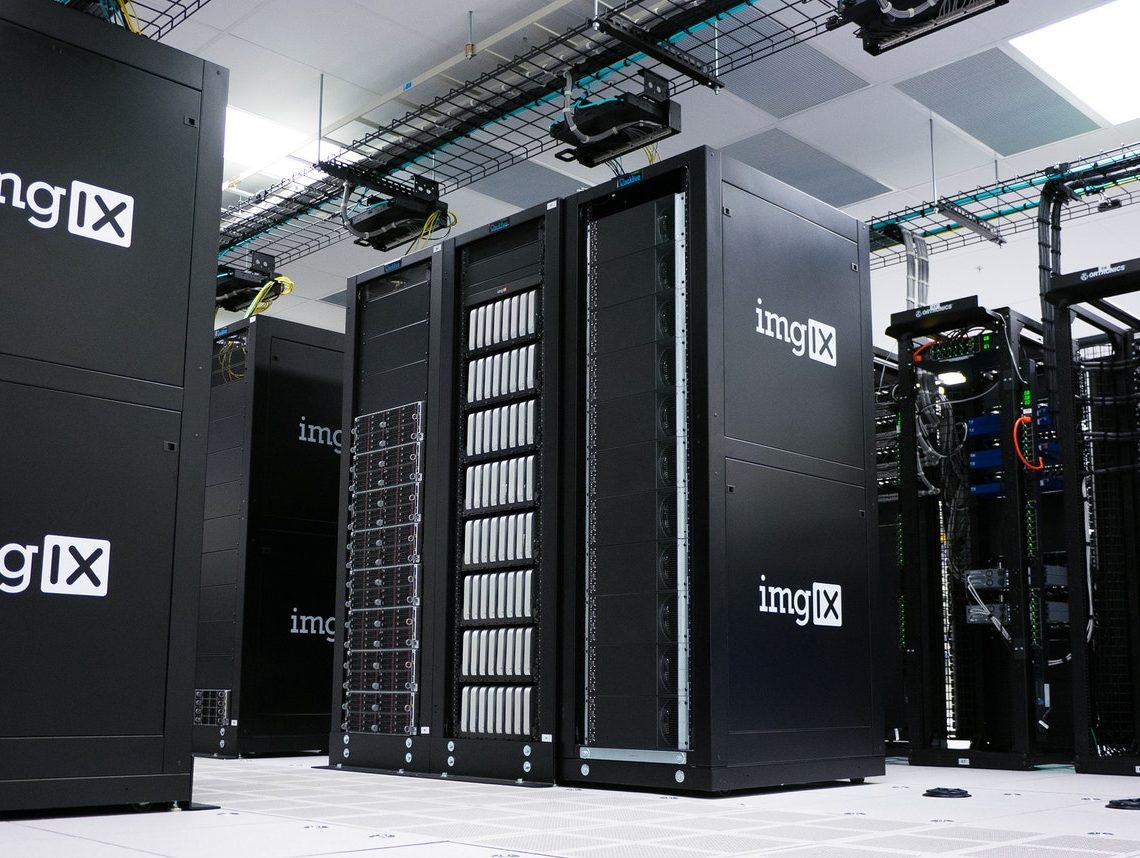
Industrial IoT ML/AI models for TCO improvement
Highlights
Industrial adoption of the Internet of Things (IoT) and digitization has provided great visibility into the several processes in a Factory or a Manufacturing Unit. The Analytics on top of the monitored data helped managers and executives improve productivity by manually monitoring each of the metrics.
Moreover, a large volume of data is generated from the various IIoT (Industrial IoT) sensors in the field, factory, etc., and this data can be used to learn patterns using advanced Machine Learning (ML) and Artificial Intelligence (AI) algorithms.
Gyrus has developed several such ML/AI algorithms for Industrial IoT that directly improve productivity. Gyrus models are adapts using the Customer data from such sensors and the custom model is integrated into Global Operations giving the below mentioned (Figure-1) top-line results. The rest of the paper talks about the different models developed, sensors used and the specific target achieved.

Company Profile
The customer is a large industrial conglomerate with over $4B+ in revenue, 10K+ employees. The Customer has several factories, warehouses, and logistics operations to produce, store and deliver to their customers worldwide. They operate on very tight margins and its protection is of paramount importance. In the first phase (this paper covers that phase), the IIoT project is implemented in a single department of the company.
Challenges
The Customer has existing systems in place at the factory floors, Global Operations center and at the warehouses. These Hardware and Software systems are a no-touch as they are operational and the current staff is well versed with them. Integrating new hardware is a big challenge as it involves installation and maintenance. For the Software systems as well, there are several databases and existing software modules that are customization and being in use case. Any new software has to integrate with those modules.
The overarching goal of predicting failures, improving efficiency, and making an impact on the TCO from the top management helped to a good extent when certain existing processes had to change.
Solution
To address the challenges mentioned above, the installation of new sensors set up without disturbing the existing flow. Certainly, Gyrus worked with a Systems Integrator who installs and maintains equipment for the Customer to install
- Wireless industrial IoT Modules
- Sensors – Vibration, Humidity, Temperature, Gyro, Accelerometer
- Wireless Controller with Connectivity to cloud
The usability of a single module with all the sensors populated with wireless connectivity helps to reduce the number of SKUs to install. Creating a parallel path for data collection and processing, without changing any of the existing hardware and machinery. It helps in the integration part to be completed fast and with the least friction.
Time series data is collected from the sensors and the ML/AI algorithms are run on that data. The data is collected from existing sources as well when required and available. For Global operation software, make use of existing software to make API calls for all the models. It also generates alerts with severity levels for predictive maintenance. And also provided with custom dashboards based on the raw data and the analysis by the ML/AI engines.

Algorithms Implemented
Implementation of ML/AI algorithms for improving overall TCO with the IoT hardware as follows.
Predictive Maintenance
With the various sensors including the Vibration sensors, providing continuous time-series data, the algorithm looks for conditions that could foretell a failure. At a base level, In order to predict any failure, anomalies located to detect in the sensor data. Over of period of time, the development of data annotation set in place, as the base data set from gyrus does not cover all the specific cases for the customer.
Remote Asset Management
The goal of asset tracking is to easily locate and monitor key assets and track their usage. It also helps in optimizing the supply chain logistics. Monitoring of active usage of the equipment is for the proper use also and reported usage is corroborated for billing. Machine Learning techniques are proven to be invaluable as an absolute match of values is not possible.
Supply Chain and Inventory Management
Gyrus Inventory Management model is used for supply chain decisions. The data from Asset Management, Weather, Seasonality, Demand Variability, Supplier Variability, Macro-economic Production, Macro-economic Consumption, Inventory levels, Sales Demand, Lead Times, even more, are in use as features to predict what to order and at the order levels.
Optimizing Manufacturing yield
This is a standard optimization model that adapts to the customer use case. Moreover, the model governs equipment usage for optimal output, Raw material input to yield optimal results. As a result, this model prescribes (Prescriptive) the usage times, and the raw material quality and quantity metrics.
Output Quality Management
Development of an output quality prediction model from the various inputs of the learning process of features affecting the output quality. The output quality prediction model predicts if the quality metrics fall below the threshold before the manufacturing and QA process. It also presents the causal features and the expected thresholds suggesting the specific areas to improve.
Please refer to the complete IoT ML/AI models from Gyrus here.
Results
Retooling parts of a Factory from both hardware and software perspective is a major challenge especially protecting the existing process in place. Setting up a parallel path for the new sensors helped the process. It’s challenging, but doable by working closely with the Customer Team in assessing the integration points and by implementing APIs for ML/AI models.
Furthermore, The results exceeded the initially set goals and the customer plans to do the next phases of the project.
The models predicted any maintenance required for the machinery with more than 99% accuracy. At times when the time was not sufficient to call in maintenance before the breakdown, just switching off the system helped save repair costs.
Moreover, the Inventory Management model saved costs by effectively placing orders and quantities. Certainly, this is a direct impact on the efficiency of the operation. Similarly, Yield and Quality improvement models had an uplift with the ML/AI models.
Above all, the whole process set in place a framework for future extensions and to have the customer embrace Industry 4.0 methodology.
ハイライト
モノのインターネット (IoT)の産業分野への導入とデジタル化により、工場または製造ユニットのいくつかのプロセスに対する優れた可視性が提供されています。 監視されたデータに対する分析を行うことで、マネージャと経営幹部は、各指標を手動で監視することで生産性を向上させることができるようになりました。
さらに、フィールドや工場などのさまざまな産業IoT (Industrial IoT)センサから大量のデータが生成され、このデータを使用して、高度な機械学習(ML)および人工知能(AI)アルゴリズムを使用してパターンを学習できます。
Gyrusは、生産性を直接向上させる産業用IoT向けのML/AIアルゴリズムを開発しました。 Gyrusモデルは、そのようなセンサからの顧客データを使用して適応され、カスタムモデルはグローバルオペレーションに統合され、以下(図1)に示すトップラインの結果を提供します。 残りのペーパーでは、開発したさまざまなモデル、使用されたセンサ、および達成された特定の目標について説明します。

顧客会社概要
顧客は、40億ドル以上の収益、1万人以上の従業員を抱える大規模な産業コングロマリットです。 お客様には、世界中のお客様に生産、保管、配送するためのいくつかの工場、倉庫、およびロジスティクス業務があります。 それらは非常に狭いマージンで動作し、その保護は最も重要です。 最初のフェーズ(このペーパーではそのフェーズについて説明します)では、インダストリアルIoTプロジェクトは、会社の一つの事業部門に実装されます。
課題
お客様は、工場のフロア、グローバルオペレーションセンター、および倉庫に既存のシステムを導入しています。 これらのハードウェアおよびソフトウェアシステムは、運用可能であり、現在のスタッフはそれらに精通しているため、手間がかかりません。 新しいハードウェアの統合は、インストールとメンテナンスを伴うため、大きな課題です。 ソフトウェアシステムについても、カスタマイズされて使用されている、複数のデータベースと既存のソフトウェアモジュールがあります。 新しいソフトウェアは、これらのモジュールと統合する必要があります。
障害を予測し、効率を改善するという、トップマネジメントからTCOに影響を与えるという包括的な目標は、特定の既存のプロセスを変更する必要がある場合に大変役立ちました。
ソリューション
上記の課題に対処するために、既存の流れを妨げることなく新しいセンサーを設置しました。 確かに、Gyrusは、お客様がインストールする機器をインストールおよび保守するシステムインテグレータと協力しました。
ワイヤレス産業用IoTモジュール
センサー–振動、湿度、温度、ジャイロ、加速度計
クラウドに接続できるワイヤレスコントローラ
すべてのセンサにワイヤレス接続が組み込まれた単一のモジュールの使いやすさは、インストールするSKUの数を減らすのに役立ちます。 既存のハードウェアや機械を変更することなく、データの収集と処理のための並列パスを作成します。 これは、統合部分を迅速かつ最小限の摩擦で完了するのに役立ちます。
時系列データはセンサから収集され、ML/AIアルゴリズムがそのデータに対して実行されます。 データは、必要に応じて利用可能な場合、既存のソースからも収集されます。 グローバルオペレーションソフトウェアの場合は、既存のソフトウェアを利用して、すべてのモデルのAPI呼び出しを行います。 また、予知保全のための重大度レベルのアラートを生成します。 また、生データとML/AIエンジンによる分析に基づいたカスタムダッシュボードも提供されます。

実装されたアルゴリズム
IoTハードウェアを使用して全体的なTCOを改善するためのML/AIアルゴリズムを次のように実装しました。
予知保全
振動センサを含むさまざまなセンサを使用して、連続的な時系列データを提供し、アルゴリズムは障害を予測できる条件を探します。 基本レベルでは、障害を予測するために、センサ データで検出するために特定された異常。 脳回からの基本データセットが顧客の特定のケースすべてを網羅しているわけではないため、一定期間にわたって、データ注釈セットの開発が実施されました。
リモート資産管理
資産追跡の目標は、主要な資産を簡単に見つけて監視し、それらの使用状況を追跡することです。 また、サプライチェーンのロジスティクスの最適化にも役立ちます。 機器のアクティブな使用状況の監視も適切な使用のためであり、報告された使用状況は請求のために裏付けられます。 値を完全に一致させることは不可能であるため、機械学習手法は非常に貴重であることが証明されています。
サプライチェーンと在庫管理
Gyrus 在庫管理モデルは、サプライチェーンの決定に使用されます。 資産管理、天候、季節性、需要変動性、サプライヤーの変動性、マクロ経済生産、マクロ経済消費、在庫レベル、販売需要、リードタイムなどのデータは、何を注文するか注文レベルを予測する機能として使用されています。
製造歩留まりの最適化
これは、お客様のユースケースに適応する標準の最適化モデルです。 さらに、このモデルは、最適な出力のための機器の使用、最適な結果を生み出すための原材料の入力を管理します。 その結果、このモデルは(規範的な)使用時間、および原材料の品質と量のメトリックを規定します。
出力品質管理
出力品質に影響を与える特徴量の学習プロセスのさまざまな入力からの出力品質予測モデルの開発。 出力品質予測モデルは、製造およびQAプロセスの前に品質メトリックがしきい値を下回るかどうかを予測します。 また、原因となる特徴と、改善すべき特定の領域を示唆する予想されるしきい値も示します
GyrusのIoT ML/AIモデルを参照してください。
結果
ハードウェアとソフトウェアの両方の観点から、工場の部品を改造することは、特に既存のプロセスを保護するための大きな課題です。 新しいセンサの並列パスを設定すると、プロセスが役立ちました。 やりがいがありますが、統合ポイントを評価する際にお客様チームと緊密に連携し、ML/AIモデルのAPIを実装することで、実行可能です。
さらに、結果は当初設定された目標を上回り、顧客はプロジェクトの次のフェーズを実行することを計画しています。
このモデルは、99%を超える精度で機械に必要なメンテナンスを予測しました。 故障前にメンテナンスを依頼する時間が足りなかったときは、システムの電源を切るだけで修理費を節約できました。
さらに、在庫管理モデルは、効果的に注文と数量を出すことでコストを節約しました。 確かに、これは操作の効率に直接影響します。 同様に、歩留まりと品質の改善モデルも、ML/AIモデルとともに上昇しました。
とりわけ、プロセス全体は、将来の拡張のためのフレームワークを設定し、顧客にインダストリー4.0の方法論を受け入れさせるためのものです。

